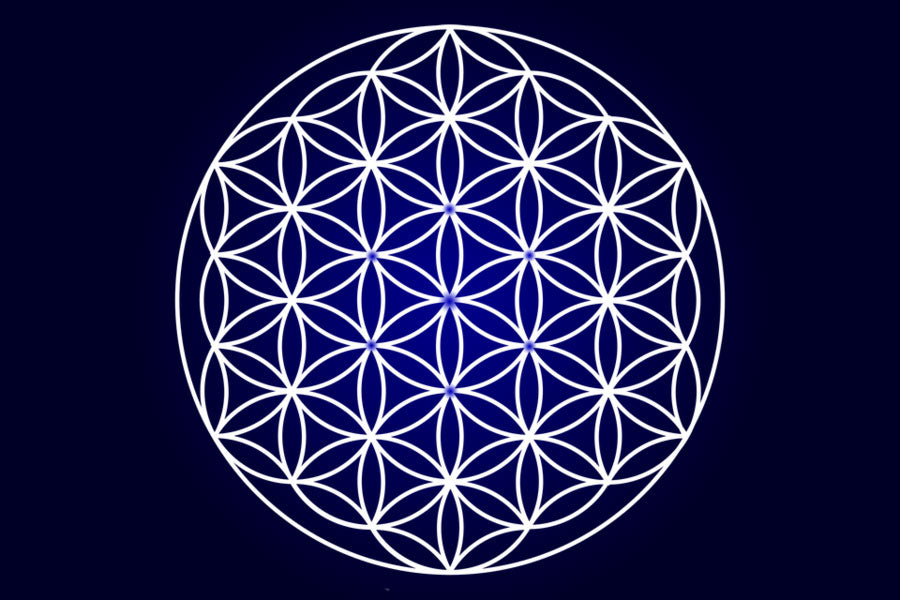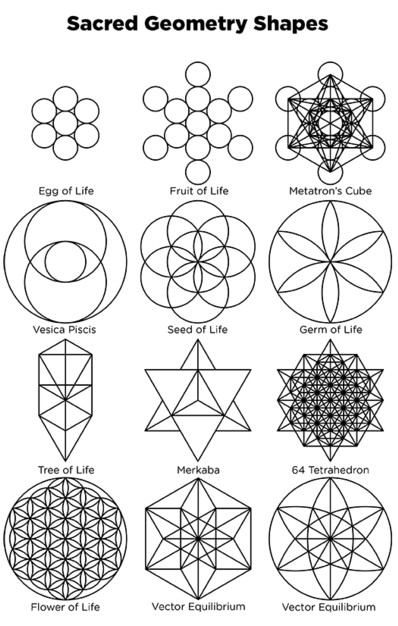Sacred Geometry Flower of Life: A Universal Representation of Harmony and Wholeness
Sacred Geometry Flower of Life: A Universal Representation of Harmony and Wholeness
Blog Article
Exploring the Spiritual Value of Spiritual Geometry: The Blossom of Life Art
The exploration of sacred geometry, specifically the Blossom of Life, invites an examination of its spiritual importance and its role in understanding our area within deep space. This elaborate design, prized across various societies, offers not just as a graph of consistency and interconnectedness but also as a tool for enhancing spiritual practices. As we decipher the layers of its history and importance, one may start to examine just how this ancient art kind can be meaningfully incorporated right into contemporary life, motivating a much deeper questions into its transformative capacity.
History of the Flower of Life
The Flower of Life is a geometric number composed of multiple overlapping circles, creating a pattern that has captivated cultures throughout history. This intricate layout is thought to go back hundreds of years, appearing in various old worlds such as Egypt, Greece, and China. Sacred Geometry Flower of Life. The earliest well-known representation is discovered in the Holy place of Osiris in Egypt, where it is engraved into rock, suggesting its value in religious and spiritual techniques

Throughout history, the Blossom of Life has continued to inspire artists, designers, and spiritual candidates, leading to its resurgence in modern-day contexts. Its classic nature shows an ingrained understanding of the cosmos, welcoming consideration of the spiritual and the mysteries of existence.
Importance and Meaning
While lots of geometric forms hold value, the Flower of Life sticks out due to its extensive significance and significance. This complex pattern, made up of overlapping circles, stands for the cycle of creation, illustrating the interconnectedness of all living things. Each circle signifies a various aspect of life, encompassing the universe, awareness, and the significance of existence.
The Flower of Life symbolizes the principle of unity, recommending that all beings and aspects of the cosmos are interlinked. It represents the equilibrium in between the spiritual and physical realms, working as a pointer of our shared origins and objective. The design is typically considered as a plan permanently, enveloping fundamental mathematical connections that regulate natural phenomena.
Furthermore, the Blossom of Life is linked with the idea of sacredness, as it is believed to hold the secret to understanding deep space's secrets. It inspires spiritual growth, urging people to seek much deeper links with themselves and the globe around them. Sacred Geometry Flower of Life. Overall, the meaning of the Blossom of Life transcends simple visual appeals, providing profound understandings right into the nature of presence and the interconnected internet of life

Cultural Representations
Exploring the cultural representations of sacred geometry reveals its extensive impact across numerous human beings throughout background. This intricate layout, often visit our website exhibited by the Blossom of Life, has shown up in diverse cultures, each connecting special definitions to its geometric patterns.
In old Egypt, the Blossom of Life was located in holy places, signifying the cycle of life and the interconnectedness of all beings. In Hinduism, sacred geometry is essential to holy place design, showing planetary order and spiritual harmony. The yantra, a geometric representation, offers as a prime focus for reflection and ritual, stressing the partnership in between the microcosm and macrocosm.
In the Islamic globe, detailed geometric patterns are widespread in art and style, symbolizing the infinite and the divine. These styles, devoid of figurative representation, produce a contemplative area that urges spiritual representation. In addition, Indigenous cultures, such as the Indigenous Americans, have accepted spiritual geometry in their rituals and crafts, emphasizing the unity between nature and spirituality.
Thus, spiritual geometry transcends corrective limits, serving as a global language that expresses extensive philosophical and spiritual truths across different societies.
Modern Interpretations
Often, modern-day analyses of sacred geometry have become a means to bridge ancient wisdom with modern spiritual methods. Artists, designers, and spiritual applicants alike have actually adjusted these age-old icons to mirror existing ideas and visual appeals, usually integrating them into individual and common rooms. The Flower of Life, a famous number within this domain, is regularly reimagined in numerous kinds, from intricate tattoos to extensive wall surface murals, each reverberating with the energy of development and interconnectedness.
In the world of health, specialists utilize spiritual geometry in reflection and mindfulness methods, thinking that these shapes can improve spiritual recognition and promote recovery. Resorts and workshops typically incorporate aspects of sacred geometry to promote deeper connections with oneself and deep space.
Additionally, the electronic age has fostered a resurgence in the popularity of sacred geometry, with online platforms enabling the quick circulation of details and artwork. This access has caused a varied variety of interpretations, each reflecting the distinct viewpoints of its creator while keeping the core concepts of consistency and equilibrium inherent in the initial designs. Hence, contemporary interpretations serve as a vibrant dialogue between the past and present, improving spiritual experiences in today's context.
Including Spiritual Geometry in Life
Integrating sacred geometry right into day-to-day life can enrich one's spiritual trip and enhance overall well-being. By purposely integrating these geometric principles, individuals can promote a deeper link to deep space and themselves.
One sensible strategy is to make use of sacred geometry in home decoration. Art work featuring styles such as the Blossom of Life or Metatron's Dice can develop a relaxing environment, promoting mindfulness and representation. In addition, incorporating these forms into personal rooms can offer as day-to-day reminders of consistency and balance.

Additionally, one can integrate spiritual geometry into personal rituals or spiritual practices. Sacred Geometry Flower of Life. Creating altars embellished with geometric signs or utilizing these shapes in intention-setting techniques can reinforce one's spiritual link
Last but not least, exploring nature's integral geometry-- such as the patterns in crystals or plants-- can influence gratitude for the interconnectedness of all life. By welcoming sacred geometry, people can grow a more meaningful and mentally enriched day-to-day presence.
Final Thought
In conclusion, the Blossom of Life offers as an effective icon within the world of spiritual geometry, standing for unity, creation, and the interconnectedness of all presence. By integrating the Flower of Life right into day-to-day methods, a much deeper understanding and gratitude of the intricate partnership between the spiritual and physical worlds can be fostered.
The exploration of sacred geometry, specifically the Blossom of Life, welcomes an assessment of its spiritual significance and its role in understanding our area within the universe. In general, the meaning of the Flower of Life transcends mere aesthetic appeals, supplying profound understandings right into the nature of presence and the interconnected internet of life.
In old Egypt, the Flower of Life was located in temples, symbolizing the cycle of life and the interconnectedness of all beings.In final thought, the Flower of Life offers as an effective symbol within the realm of spiritual geometry, representing unity, development, and the interconnectedness of all existence. By incorporating the Flower of Life into everyday practices, a much click resources deeper understanding and admiration of the elaborate partnership between the physical and spiritual realms can be fostered.
Report this page